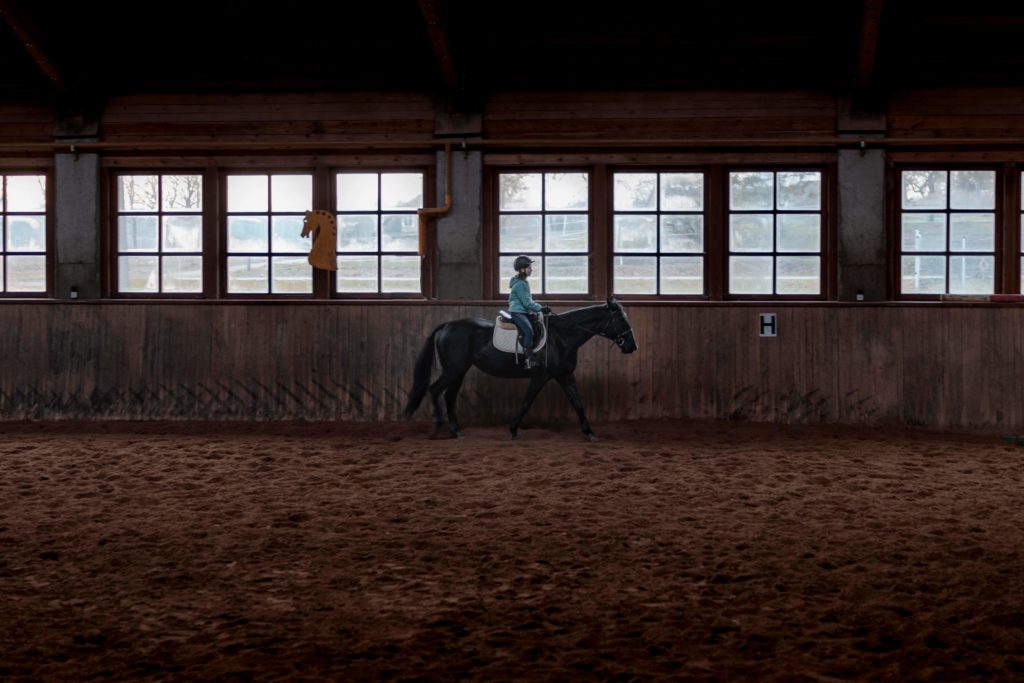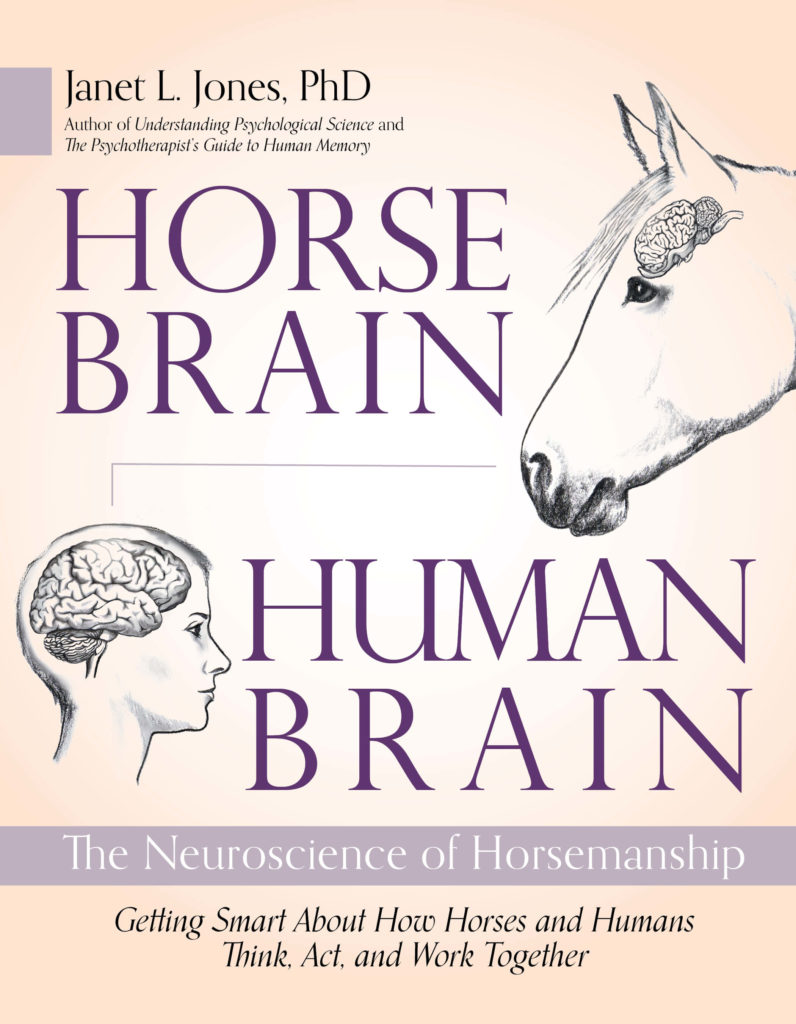This excerpt from “Horse Brain, Human Brain” by Janet Jones is reprinted with permission of Trafalgar Square Books.
In this excerpt from her book Horse Brain, Human Brain, brain scientist and horsewoman Janet Jones explains how the horse struggles to adjust to seeing in dimly lit locations.
Horses have a reasonable degree of night vision—enough to wander from hay bin to water trough in the dark and notice movements in the shrubs. It’s more acute than human night vision, which is about as effective as underwater breathing, but still not sharp enough to identify details, hop a cross-rail, or load into a trailer comfortably. The fact that a horse will try to complete these tasks in the dark is evidence of a willingness to obey, not proof of good nocturnal eyesight.
The real rub with night vision comes when we realize that horses can make out shapes in dark conditions only after a long period of pupillary adaptation. This makes sense because equine vision developed when horses stood outside as dusk settled very slowly on the earth. But today, we expect them to enter dark barns and indoor arenas from bright sunlight. Show riders often expect horses to move from sunlight into an indoor arena during performance. Top facilities use intense lights for illumination, but lesser locations tend to skimp. And at home, most winter riders work horses indoors, where footing is good but lighting is not. How do these changes affect equine performance?
 Photo by Gantas Vaičiulėnas from Pexels.
Photo by Gantas Vaičiulėnas from Pexels.
Although all disciplines are affected, let’s consider jumping because it is so dependent on acute equine eyesight. Jumping horses have to judge the height and width of fences very quickly, often scanning distances on a short approach, adjusting stride length for takeoff, carrying riders who transmit countless cues, and coordinating their bodies to clear obstacles by only an inch or two. These are meticulous feats that would cause many human athletes to stumble.
Riders all over the world warm up hunters and jumpers in bright sun prior to competition. After a typical warm up, Twinkletoes’ pupils are constricted to the maximum degree to admit as little light as possible. The chemicals that transduce light into neural impulses are at their ebb. This combination of pupillary contraction and chemical paucity allows the horse to jump in bright sun without being blinded by the glare. High elevation, central latitudes, low humidity, pale arena sand, and white fences demand even greater adaptation.
Twinkletoes is jumping well in the warm-up when the gate steward calls him to the indoor show arena. His rider removes her sunglasses at the in-gate, instantly improving her indoor vision. Too bad Twink can’t shove his face into some military night goggles.
Through the gate they go, galloping into the murk to leap over 8 or 12, sometimes 15, jumps that the horse can barely see. And oh, by the way, like all of us, Twink’s rider expects top-quality performance. But he hasn’t come close to the 45 minutes he needs to accommodate to indoor lighting. Typically, he’s had one minute, if that.
The scenario described here is common. We allow it because we are not aware of the visual hardship for the horse. Most of us reprove mounts who balk at the in-gate, weave between fences, skirt the flower box, or refuse to jump. We assume that if we can see the course, they can, too. But imagine moving from a sunny parking lot into a darkened movie theater, then dashing around under a heavy backpack—hurdling seats, slipping on buttered popcorn, and dodging angry patrons. The fact that horses try to perform under such circumstances is a testament to their generosity.
Pick up your copy of Horse Brain, Human Brain by Janet Jones here.

